FARMINGTON — A simulated car bomb went off in the University of Maine Farmington parking lot. Actors playing victims lay strewn across the parking lot.
It was part of a full-scale Homeland Security training exercise – the first of its kind at a Maine university. In the scenario, some victims were able to leave the parking lot and escape, but others lay wounded, unable to get up as an ambulance was blocked from approaching because of fear of another explosion.
Farmington Police Chief Jack Peck and Officer Darin Gilbert ran to an injured woman on the pavement and knelt beside her, explaining they would carry her to safer ground.
Farmington police were among 200 people from more than 20 agencies who joined forces early Friday in an active shooter drill intended to help a variety of public safety personnel learn to work together during a large-scale public safety crisis.
The emergency preparedness drill was the culmination of 18 months of preparation, including two smaller exercises for first responders held in April and August of last year.
The scenario was developed through the federal Homeland Security Exercise and Evaluation Program, which develops best practices standards for large-scale emergency response.
The scenario involved a student who started asking questions about bomb materials during a chemistry class and then became confrontational when questioned by police.
The situation escalated as the student returned to campus with a gun, detonated a car bomb as a diversion in the High Street parking lot and created a standoff with a hostage in Preble Hall.
The drill spread through town, from the scene of the simulated crime at UMF, to the incident command center at the Farmington Fire Department, to a makeshift help center for families of the simulated victims on the Mt. Blue High School campus, and finally at Franklin Memorial Hospital.
“We worked together, trained together and this is the way we would handle an incident of this size, whether here or a public school or maybe an industry,” said Clyde Ross, public information officer for the Franklin County Emergency Management Agency, following the drill.
Representatives from Husson University, Thomas College and Bowdoin College observed Friday’s drill.
The exercise was coordinated by Scott Parker, a state emergency management consultant, who will be giving a formal report to participating organizations on the overall response to the simulation.
Ross said while emergency responders in the area haven’t had a real-life scenario such as an active campus shooter, there have been times, such as the Lac-Megantic train explosion last year, when first responders needed to communicate and coordinate in the wake of a large disaster.
Ross said through such live-action drills, the responders network can become familiar with who is who in the different agencies, forming relationships which can make a difference in a real emergency.
“It also lets us know their capabilities,” he said.
In a debriefing following the drill, NorthStar regional operations manager Lee Ireland said part of the feedback he received was that the hospital was not notified of the fake shooting until 38 minutes after the simulation began. He said in a real scenario, the hospital would have to be notified more quickly.
Ireland said it’s difficult but important for responders to first sort victims by level of injury during a mass casualty, but during the drill he said the emergency medical workers properly triaged the victims.
“That’s the hardest thing of these drills, to walk through and not render care,” he said.
Overall, responders repeated that they could work on improving communication and coordination among agencies.
The two 911 county dispatchers who participated continued to take real-time calls about real situations from the public while participating in the simulation, including one 15-minute emergency medical call.
Celeste Branham, UMF Vice president of student and community services, said the drill reaffirmed the school’s policies and “was fabulously instructive to us.”
Kaitlin Schroeder can be contacted at 861-9252 or at:
kschroeder@centralmaine.com
Send questions/comments to the editors.

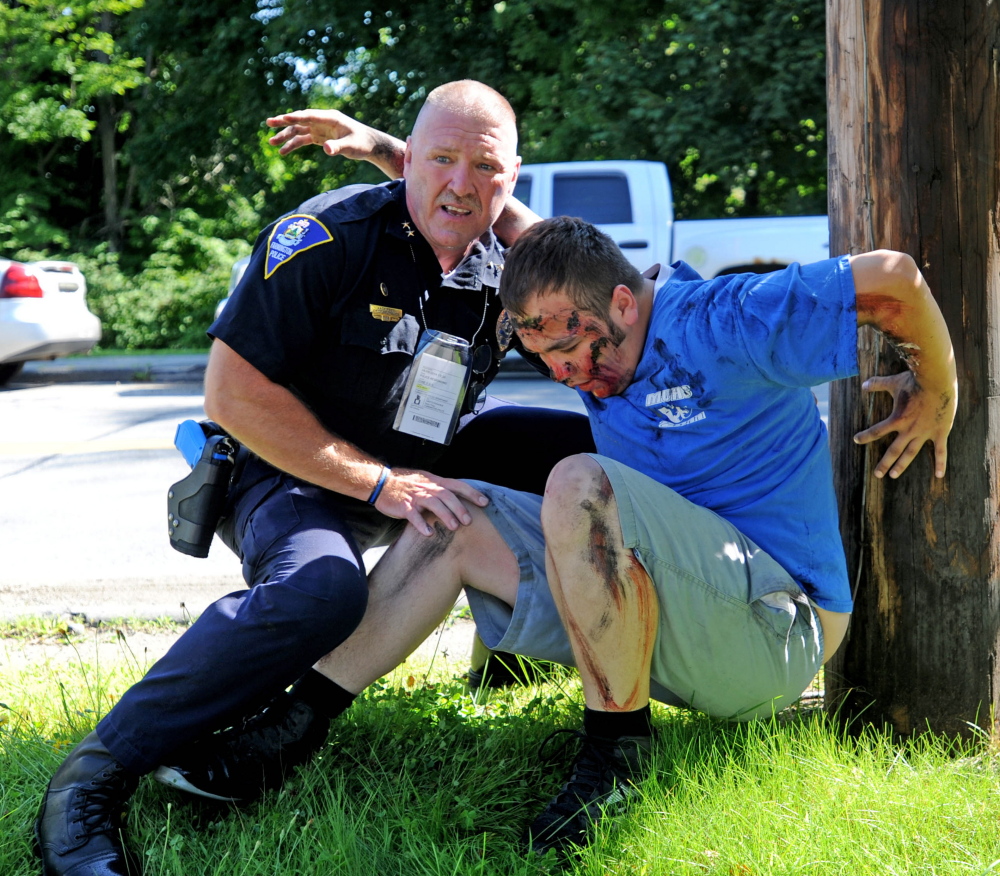
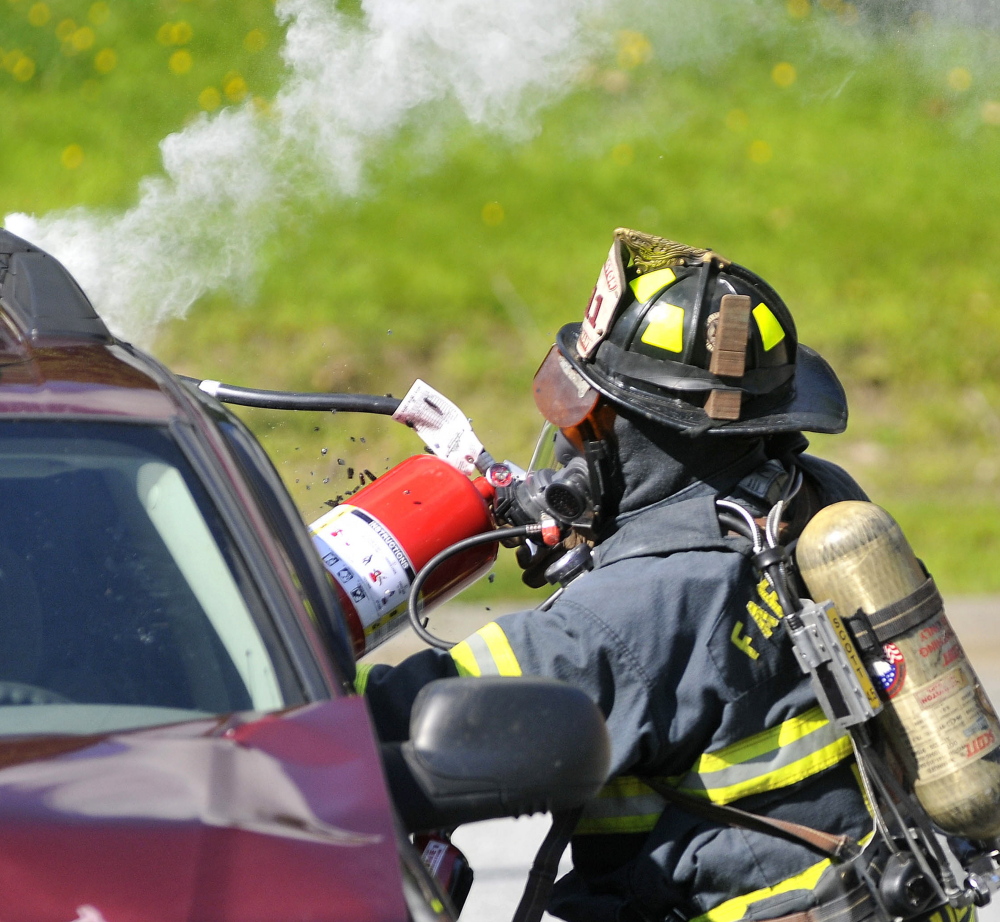
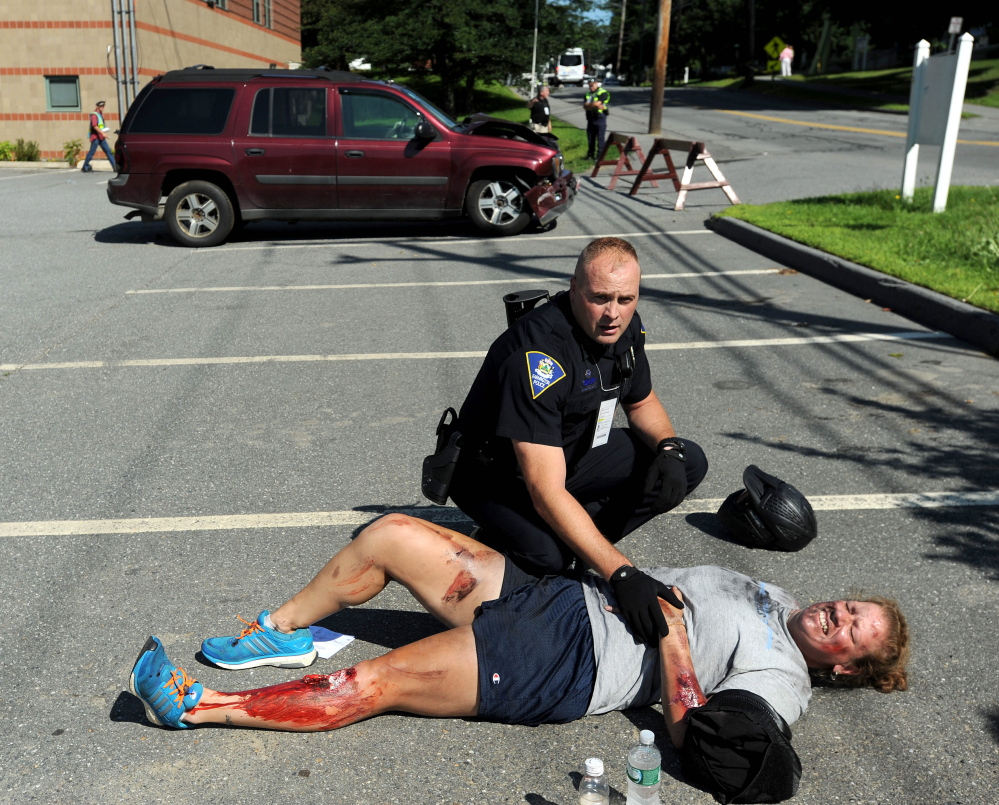
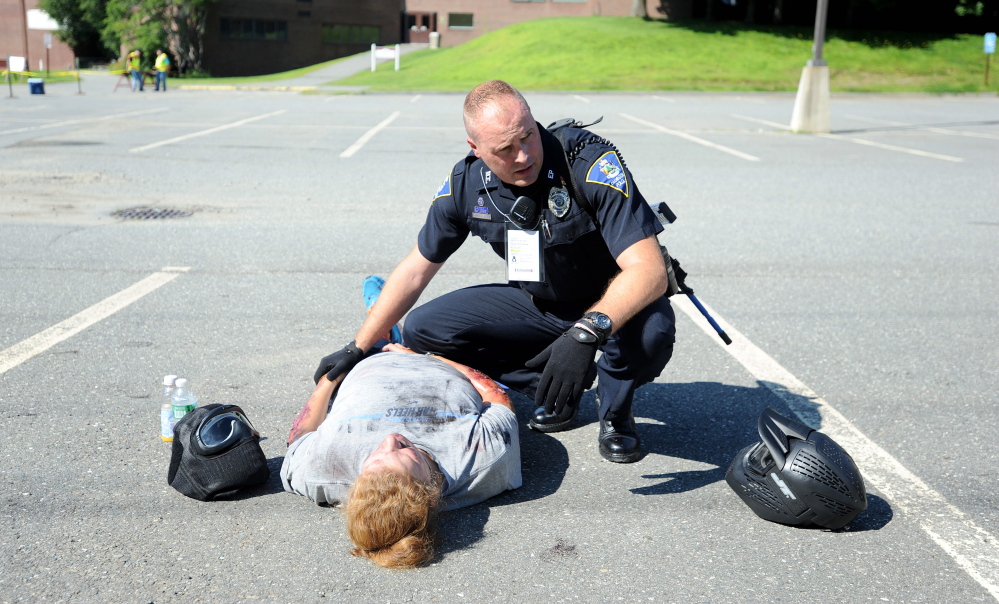
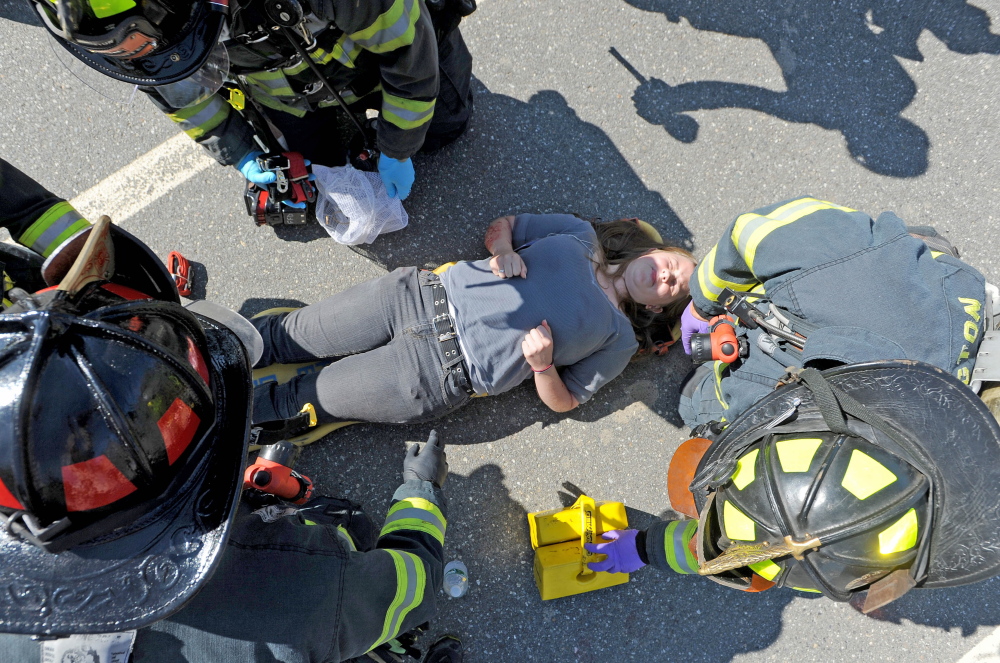
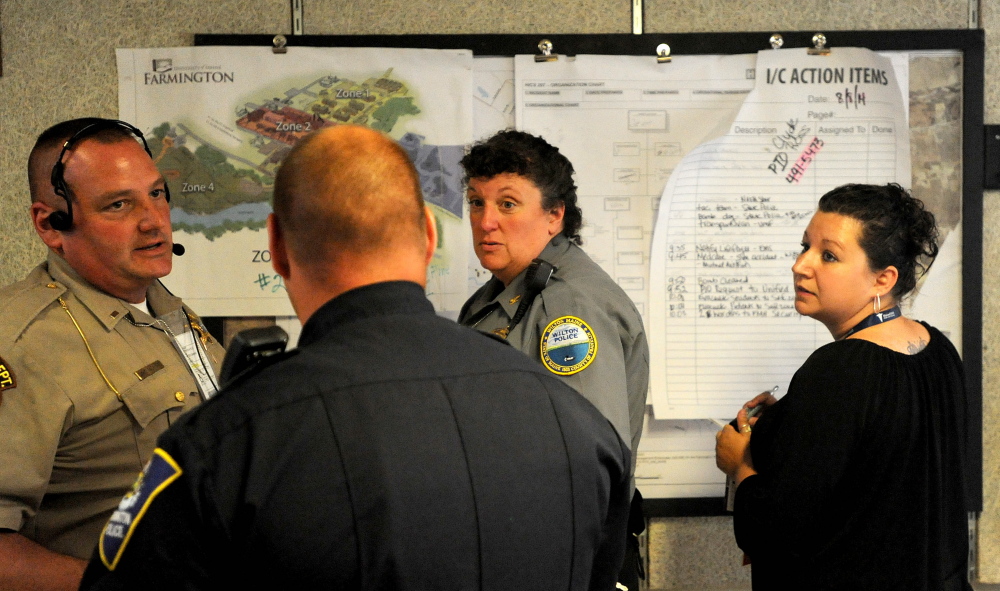
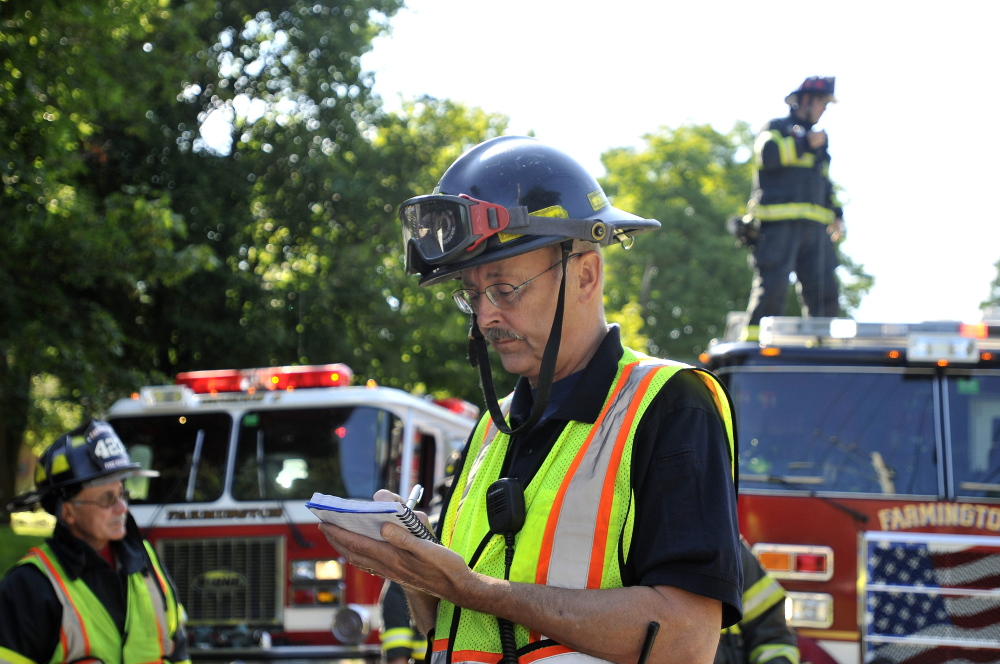
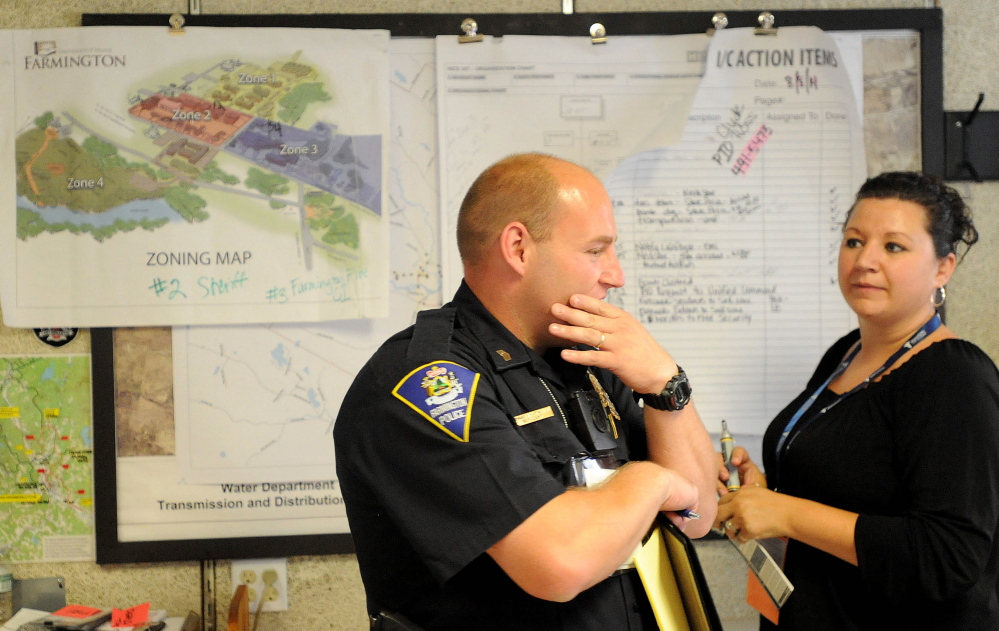
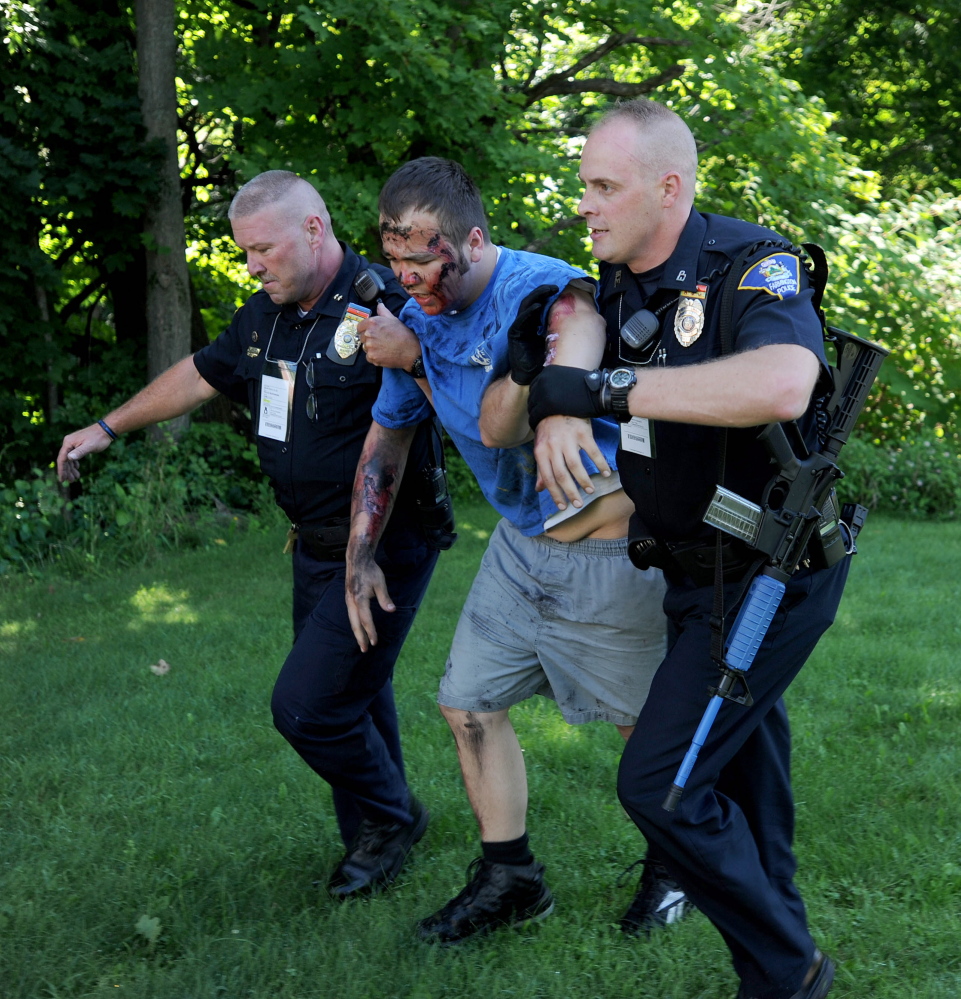

Success. Please wait for the page to reload. If the page does not reload within 5 seconds, please refresh the page.
Enter your email and password to access comments.
Hi, to comment on stories you must . This profile is in addition to your subscription and website login.
Already have a commenting profile? .
Invalid username/password.
Please check your email to confirm and complete your registration.
Only subscribers are eligible to post comments. Please subscribe or login first for digital access. Here’s why.
Use the form below to reset your password. When you've submitted your account email, we will send an email with a reset code.